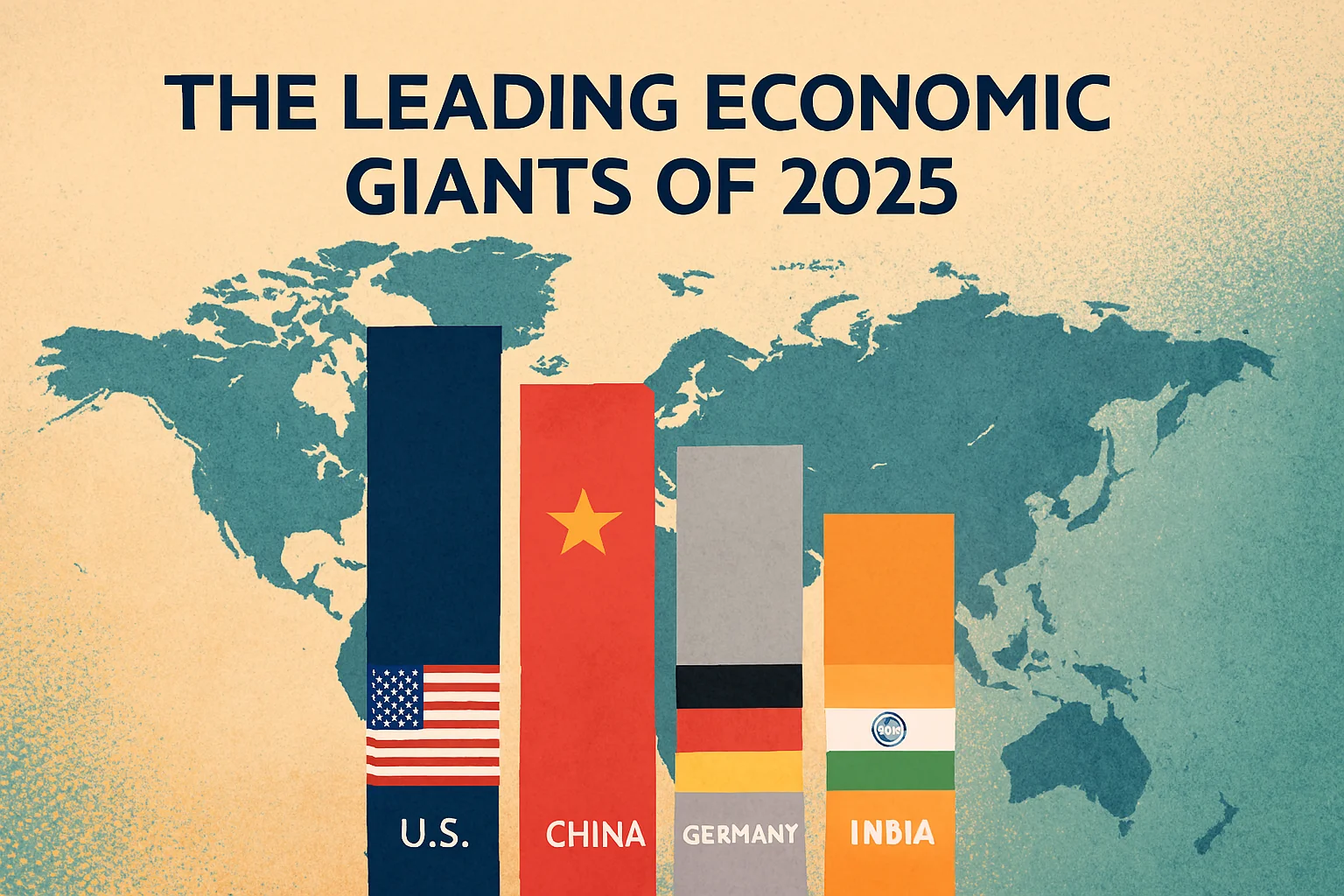Economy
Unlocking Pakistan’s Digital Revolution: Special Tech Zones Unveiled! 💥

The establishment of Special Technology Zones (STZs) in Pakistan marks a crucial milestone in the nation’s journey towards economic prosperity and technological development. In today’s rapidly evolving global landscape, the creation of these zones presents Pakistan with a unique opportunity to unleash its full potential, attract foreign investment, and build a thriving tech industry.
These zones are poised to bring about a significant shift in Pakistan’s economic landscape, creating thousands of new jobs and opening up new avenues for innovation and growth. By offering a conducive environment for businesses, the STZs have the potential to transform Pakistan’s technology sector and place it on the global map. In this opinion piece, we will delve deeper into the implications of STZs for Pakistan and explore the immense opportunities that these zones present for the nation’s future.
Introduction: A Vision for Technological Advancement
A Vision Unveiled
The Special Technology Zones (STZs) in Pakistan have emerged as a promising opportunity for businesses to thrive in a conducive environment. These zones have the potential to transform the country’s technology sector and put it on the global map. In this opinion piece, we will explore the far-reaching implications of STZs on the economy, job creation, innovation, and the overall growth of the country’s technology landscape.
The Role of Technology
In today’s world, technology is at the forefront of progress and development. It has become an essential tool for shaping the future of economies and societies across the globe. The ability to harness technology and leverage its power is critical to drive innovation, improve efficiency, and create new growth opportunities. Therefore, highlighting the pivotal role of technology in modern development is more important than ever before.
Setting the Stage for Innovation
Innovation is a key driver of economic growth and technology plays a critical role in this process. Special Technology Zones (STZs) have emerged as important centers for innovation and creativity, which can foster the development of new products and services. Understanding the potential of STZs as innovation hubs is therefore crucial in the ongoing dialogue about how to best support and promote economic growth in the digital age.
The Significance of Special Technology Zones
Foreign Investment and Economic Growth
Special economic zones (STZs) are emerging as a promising avenue for foreign investors seeking lucrative investment opportunities. These zones are designed to provide a range of incentives to foreign businesses, such as tax exemptions and streamlined regulations, making them an attractive proposition for foreign capital. As a result, STZs have the potential to become magnets for foreign investment, leading to significant economic growth and development.
Job Creation and Skills Enhancement
A thriving tech ecosystem necessitates a skilled workforce. This section will examine how the development of STZs can lead to the creation of jobs and the enhancement of the local workforce’s skills.
Bridging the Digital Divide
In today’s digital age, access to technology has become more important than ever. Unfortunately, many people still lack access to basic technological tools, which creates a digital divide. To bridge this gap, we need to explore all possible solutions, including the potential contribution of Special Technology Zones (STZs). By leveraging STZs, we can create more opportunities for people to access technology and ultimately reduce the digital divide.
Possibilities and Opportunities
Technological Infrastructure
The role of infrastructure in technological advancement cannot be overstated. The implementation of advanced infrastructure within STZs is crucial for promoting innovation and facilitating research and development. These zones offer a unique opportunity to create an environment that fosters collaboration and knowledge-sharing among researchers, entrepreneurs, and industry experts. Therefore, it’s important to explore the possibilities of how advanced infrastructure can be leveraged within STZs to drive innovation and accelerate progress.
Research and Development
Research and development (R&D) plays a crucial role in driving innovation and growth in any industry. In this context, Special Technology Zones (STZs) can serve as centres of excellence for cutting-edge research and innovation. With the right policies and investments, STZs can attract top talent, foster collaboration between academia and industry, and promote the development of new products, services, and technologies that can transform entire sectors.
Fostering Startups and Entrepreneurship
Startups are crucial to the growth and innovation of the tech industry. They bring fresh ideas, disruptive solutions, and new perspectives that challenge the status quo. Small Technology Zones (STZs) can play a vital role in fostering a supportive and collaborative environment where startups can thrive. By providing access to resources, mentorship, networking opportunities, and a sense of community, STZs can help startups overcome challenges realize their full potential.
The Importance of Collaboration
Public-Private Partnerships
Collaboration between the government and private sector is pivotal in the success of STZs. This section will emphasize the importance of such partnerships.
Global Integration
Special Technology Zones (STZs) in Pakistan have the potential to act as a conduit between the country and the global tech industry. Given this, it is imperative to explore the possibilities of forging international partnerships and collaborations that can emerge from these zones.
Knowledge Transfer and Skill Exchange
Facilitating the exchange of knowledge and skills is essential for the growth of STZs. Highlighting how these zones can foster such exchanges is of great importance.
Conclusion: A Bright Future for Pakistan
The development of Special Technology Zones in Pakistan offers a promising path to a brighter future. By harnessing the potential of technology, attracting foreign investment, and fostering innovation, these zones have the potential to reshape the economic landscape of the nation. The possibilities are vast, and the importance of this endeavour cannot be overstated. As Pakistan marches forward in the digital age, the creation of STZs is a visionary step that holds immense prospects and significance.
With a commitment to innovation and collaboration, Pakistan can position itself on the global tech map and become a beacon of progress and prosperity. The future is indeed bright for Pakistan, and the development of Special Technology Zones is the key to unlocking its full potential.
In a world where technology is the driving force of progress, Pakistan’s journey in establishing STZs is a step in the right direction. The road ahead is paved with opportunities, and the importance of this endeavor is crystal clear. As we move forward, let us embrace the possibilities and work collectively towards a tech-savvy and economically robust Pakistan.
Discover more from Startups Pro,Inc
Subscribe to get the latest posts sent to your email.
Analysis
The Leading Economic Giants of 2025: Fourth Quarter Insights as December Ends

Introduction
As December 2025 draws to a close, the global economy stands at a fascinating crossroads. The fourth quarter has revealed both continuity and disruption: familiar giants, such as the United States and China, continue to dominate, while rising powers, including India and Germany, reshape the hierarchy. The chessboard of global GDP leaders is shifting, and the implications for trade, investment, and geopolitics are profound.
This article provides a data-driven analysis of the leading economic giants of 2025, comparing nominal GDP, purchasing power parity (PPP), and growth trajectories. It integrates authentic statistics from the IMF, OECD, and Fitch Ratings, while embedding SEO-rich
United States – Still the Nominal Leader
The United States remains the world’s largest economy in nominal terms, with GDP estimated at $29 trillion in 2025. Growth has moderated to around 2%, reflecting a mature cycle but supported by robust consumer spending and AI-driven productivity gains.
- Inflation: ~2.75%, easing from earlier highs.
- Monetary Policy: The Federal Reserve has begun rate cuts, balancing inflation control with growth support.
- Sectoral Strength: Technology, healthcare, and financial services continue to anchor resilience.
Despite China’s PPP dominance, the U.S. retains unmatched influence in global capital markets, innovation ecosystems, and reserve currency status.
China – Closing the Gap
China’s economy has expanded to nearly $26 trillion nominal GDP, with growth around 4.8% in 2025. On a PPP basis, China leads the world, outpacing the U.S. by an estimated Int. $10.4 trillion.
- Exports: Strong performance in EVs, semiconductors, and renewable energy.
- Domestic Demand: Rising middle-class consumption continues to drive growth.
- Challenges: Property sector fragility and demographic headwinds remain.
China’s ability to sustain growth above advanced economies underscores its role as a global GDP leader 2025, though questions linger about structural reforms.
India – The Rising Star
India has emerged as the fastest-growing major economy, with GDP growth near 6% in 2025. Its nominal GDP is projected at $4.8 trillion, positioning it to surpass Japan by 2026 and claim the fourth-largest spot globally.
- Drivers: Digital economy expansion, infrastructure investment, and strong domestic demand.
- Demographics: A youthful workforce contrasts sharply with aging populations in advanced economies.
- Global Role: Increasing influence in supply chains, fintech, and renewable energy.
India’s trajectory exemplifies the emerging markets rise 2025, making it a focal point for investors and policymakers alike.
Germany – Europe’s Anchor
Germany solidified its position as the third-largest economy, overtaking Japan in 2023 and maintaining momentum in 2025. With GDP around $5.5 trillion, Germany anchors the Eurozone, which grew at 1.4% in 2025.
- Industrial Strength: Automotive, engineering, and green technologies.
- Policy Focus: Energy transition and fiscal discipline.
- Resilience: Despite global headwinds, Germany’s export machine remains robust.
Germany’s role as Europe’s anchor highlights the Eurozone Q4 outlook, balancing stability with innovation.
Japan & Emerging Markets
Japan, once the world’s second-largest economy, has slipped to fifth place with GDP around $4.7 trillion. Growth remains sluggish (~1%), constrained by demographics and deflationary pressures.
Meanwhile, emerging markets such as Brazil, Indonesia, and Nigeria are showing resilience. Their collective growth underscores the global growth forecasts 2025, with commodity exports, digital adoption, and regional trade blocs driving momentum.
Comparative Data Table
| Country | Nominal GDP (2025 est.) | Growth Rate | PPP Position |
|---|---|---|---|
| US | $29T | 2% | #2 |
| China | $26T | 4.8% | #1 |
| Germany | $5.5T | 1.4% | #4 |
| India | $4.8T | 6% | #3 |
| Japan | $4.7T | 1% | #5 |
Conclusion – Looking Ahead to 2026
As 2025 ends, the economic giants Q4 2025 analysis reveals a reshaped hierarchy. The U.S. remains the nominal leader, China dominates PPP, India rises rapidly, and Germany anchors Europe. Emerging markets add dynamism to the global outlook.
Looking ahead to 2026:
- AI-driven productivity will offset demographic challenges.
- Green energy transition will redefine industrial competitiveness.
- Geopolitical risks (trade tensions, regional conflicts) will test resilience.
The economic outlook 2026 suggests a world where power is more distributed, innovation is more global, and competition is more intense.
Discover more from Startups Pro,Inc
Subscribe to get the latest posts sent to your email.
Analysis
The Government Shutdown’s Data Gap Is Pushing the US Economy Toward a Cliff

Discussing the U.S. economy is like piloting a sophisticated aircraft through a treacherous mountain pass. Success depends entirely on a constant stream of reliable data from the cockpit instruments. Today, in a stunning act of self-sabotage, Washington has smashed those instruments. The government shutdown economic data gap has plunged us into a statistical blackout, and the US economic outlook is obscured not by external forces, but by our own dysfunction.
This is not a passive statistical inconvenience. This economic data blind spot is an active, high-stakes threat. By failing to fund the basic operations of government, including the Bureau of Labour Statistics (BLS) and the Bureau of Economic Analysis (BEA), Congress has effectively forced the Federal Reserve, corporations, and investors to fly blind. This profound economic uncertainty paralyses investment decisions, chills hiring, and all but guarantees a policy error from a data-starved central bank.
The Fed’s Dilemma: Monetary Policy in a Blackout
The Federal Reserve’s entire modern mandate is “data-dependent.” Every speech, every press conference, every decision hinges on two key datapoints: inflation (the Consumer Price Index, or CPI) and employment (the jobs report).
Now, for the first time in decades, that data is gone.
The White House has already warned that the October jobs and inflation reports may be permanently lost, not just delayed. This economic data blind spot could not come at a worse time. The Fed is at a crucial pivot point, weighing when to begin Federal Reserve interest rate cuts to steer the economy clear of a recession.
Without the BLS data on jobs or the BEA data that feeds into inflation metrics, the Fed is trapped.
- If they cut rates based on “vibes,” as one analyst put it, they risk reigniting inflation and destroying their hard-won credibility.
- If they wait for clean data that may not come for months, they will be acting too late, all but ensuring the “soft landing” evaporates into a hard crash.
Fed officials themselves are admitting they are “driving in the fog.” This isn’t caution; it’s paralysis. We are forcing our central bankers to gamble with monetary policy, and the stakes are a potential recession.
Corporate Paralysis: Why the Data Gap Freezes Investment
This crisis of confidence extends far beyond the Fed. The private sector runs on the same official government data. A CEO cannot approve a nine-figure capital expenditure on a new factory or a C-suite cannot green-light a major hiring spree without a clear forecast.
That forecasting is now impossible. The shutdown impact on investment decisions is direct and immediate.
- Risk Assessment: How can a company model its five-year plan without reliable GDP report inputs or inflation projections?
- Market Sizing: How does a retailer plan inventory without understanding consumer spending or retail sales data?
- Financing: How can a company issue bonds or seek a loan on favourable terms when investors can’t accurately price risk in this environment of economic uncertainty?
When faced with a total lack of information, businesses do not take risks. They default to the safest, most defensive posture: they delay investment, freeze hiring, and hoard cash. This widespread corporate paralysis, in and of itself, is enough to trigger the very economic slowdown everyone fears.
The “Statistical Blind Spot” Has Real-World Consequences
This is not an abstract problem for Wall Street. The economic data blind spot is already hurting Main Street.
The Fed’s forced “hesitancy”—its inability to cut rates due to the data blackout—means borrowing costs stay higher for longer. That small business owner trying to get a loan to manage inventory is paying a higher interest rate. That family trying to buy a home is locked out by mortgage rates that could and should be falling.
The government shutdown economic data gap is a direct tax on American families and entrepreneurs. It’s the price we all pay for a manufactured crisis that has blinded our nation’s economic stewards.
Conclusion: An Unforgivable, Self-Inflicted Wound
The cost of this government shutdown is no longer just about furloughed workers or closed national parks. The real cost is the reckless, high-stakes gamble being placed on the entire U.S. economy.
We are in a fragile economic transition, and our political leaders have just ripped the gauges out of the cockpit. This economic data blind spot is a self-inflicted wound that injects profound risk into the system, invites a recession, and punishes everyday Americans. We must demand an end to this reckless “data blackout” immediately—before our leaders fly the economy straight into the mountainside.
Discover more from Startups Pro,Inc
Subscribe to get the latest posts sent to your email.
Business
The ACH Anachronism: Why the IRS Direct Deposit System is Unfit for the Digital Future of Aid

The political siren song for immediate, blockchain-powered relief—however hyperbolic the idea of doge checks may be—is forcing a reckoning with the ageing IRS direct deposit infrastructure, a system ill-equipped for instant, mass-scale payments.
The United States government is quietly approaching a major inflexion point in its relationship with its citizens: the speed and method of its financial disbursements. While the current tax season may feature the familiar, reliable process of the IRS direct deposit, the future of federal aid—from universal basic income (UBI) pilots to targeted economic relief—demands a technological leap the Internal Revenue Service is fundamentally unprepared to make. The conflict is straightforward: the political desire for instant, transparent relief directly clashes with a legacy system, the ACH network, which is slow, prone to errors, and structurally resistant to digital innovation. The absurd, yet viral, idea of doge checks—payments tied to volatile digital assets—serves as a useful, if hyperbolic, symbol for the intense political and public pressure to adopt a 21st-century payment infrastructure.
My core argument is this: The future of federal aid hinges on transforming the slow, traditional irs direct deposit relief payment system to handle not just fiat currency, but the inevitable political pushes for digital and crypto distributions, symbolised by the far-fetched idea of doge checks. Failure to act will not only result in massive administrative costs but also undermine the effectiveness of future government interventions, leaving millions of the unbanked behind.
1: The Reliability and Limitations of Traditional Infrastructure
The sheer scale of the existing IRS direct deposit system is impressive. It can manage billions in tax refunds and, as demonstrated during the pandemic, process emergency IRS direct deposit relief payment disbursements to over 150 million Americans. This process, facilitated by the Automated Clearing House (ACH) network, is a testament to the stability of the traditional U.S. banking system.
However, its reliability comes with severe limitations. The ACH network operates on a batch-processing schedule, meaning fund transfer is not instantaneous, often taking several business days to move from the Treasury to an individual bank account. During a crisis, this delay is not merely inconvenient; it is economically damaging, as aid meant to be immediate is delayed.
Furthermore, the integrity of the direct deposit irs system relies on having accurate, up-to-date bank information. During the emergency stimulus payouts, the IRS struggled massively with stale bank account numbers, leading to countless payments being rejected and reverted back to slow, fraud-prone paper checks. A significant percentage of Americans remain unbanked or underbanked, forcing them to rely on costly cheque-cashing services that extract value from the very aid the government provides. Any IRS direct deposit relief payment program that relies solely on this legacy mechanism guarantees a continuation of this disparity, benefiting those already securely entrenched in the formal banking system while penalising the most vulnerable.
2: The Crypto and Novel Payment Concept
The idea of doge checks is admittedly a jest—the notion of the U.S. government issuing relief payments tied to a volatile meme coin is financially reckless and legally complex. Yet, the concept serves as a vital lightning rod for a real political and technological shift. The underlying pressure is for speed, transparency, and a system that bypasses the old banking intermediaries.
Digital payment advocates point to the benefits of blockchain technology: instant settlement, immutable records, and programmable money that could, in theory, ensure funds are spent for their intended purpose. The political allure is undeniable: immediate relief hitting digital wallets, eliminating the delays of the traditional IRS direct deposit system. Imagine a UBI pilot where funds are disbursed in real-time, 24/7, without the weekend and holiday delays inherent in the direct deposit IRS process.
But the challenges of moving beyond the IRS direct deposit relief payment are immense. The IRS currently treats cryptocurrency as property, not currency, for tax purposes. Distributing doge checks or any stablecoin would create immediate, cascading tax complexity for every recipient, requiring the individual to track the value of the digital asset from the moment of receipt until it is spent. This would be a compliance nightmare. Moreover, the security protocols, wallet management, and key custody requirements necessary to protect the government and citizens from hacking, fraud, and lost funds are simply nonexistent within the current IRS direct deposit regulatory framework. The political noise around non-traditional payments is getting louder, but the practical infrastructure is nowhere close to ready.
3: The Path Forward: Digitizing Federal Aid
The solution is not necessarily literal doge checks but rather adopting the spirit of instant digital transfer within the safety of the fiat system. The immediate, achievable goal must be to render the slow, two-to-three-day IRS direct deposit relief payment obsolete.
First, the direct deposit irs system must fully embrace instant payment technologies now available across major banking systems (like FedNow or RTP), allowing funds to clear and settle in seconds, not days. Second, the IRS must partner strategically with regulated digital payment providers and prepaid debit card issuers to provide easy, no-fee digital wallets for the unbanked. The focus must shift from simply gathering bank account numbers to ensuring every eligible citizen has a functional, real-time payment endpoint.
This modernisation effort is not just about speed; it’s about security. The legacy IRS direct deposit system is vulnerable to mass fraud when personal information is compromised. By migrating to modern, tokenised payment methods and leveraging state-of-the-art encryption, the IRS can drastically reduce the risk of fraud while improving service. The demand for instant, transparent funds—the core value proposition embedded within the political hype of doge checks—will not vanish. If the IRS’s direct deposit system doesn’t modernise, it risks becoming a bottleneck that strangles necessary economic aid at the moment of peak crisis.
Conclusion
The challenge facing federal agencies is profound: to move beyond the analogue, batch-processed reality of the IRS direct deposit system and prepare for a digital-first future. The hyperbolic call for doge checks is a powerful symbol, demonstrating the public’s appetite for immediate, unencumbered funds. That political will, however disruptive, must catalyse change. The failure of the direct deposit IRS to handle the scale and speed of a modern crisis will be more than an administrative delay; it will be an economic and moral failure. The question is whether the inertia of the current system will prevail, or if the demands of future aid will force a rapid, potentially chaotic leap into digital disbursement methods, ensuring that the legacy of the doge checks concept is not a joke but a powerful catalyst for necessary technological evolution.
Discover more from Startups Pro,Inc
Subscribe to get the latest posts sent to your email.
-
Digital5 years ago
Social Media and polarization of society
-
Digital5 years ago
Pakistan Moves Closer to Train One Million Youth with Digital Skills
-
Digital5 years ago
Karachi-based digital bookkeeping startup, CreditBook raises $1.5 million in seed funding
-
News5 years ago
Dr . Arif Alvi visits the National Museum of Pakistan, Karachi
-
Digital5 years ago
WHATSAPP Privacy Concerns Affecting Public Data -MOIT&T Pakistan
-
Kashmir5 years ago
Pakistan Mission Islamabad Celebrates “KASHMIRI SOLIDARITY DAY “
-
Business4 years ago
Are You Ready to Start Your Own Business? 7 Tips and Decision-Making Tools
-
China5 years ago
TIKTOK’s global growth and expansion : a bubble or reality ?
























